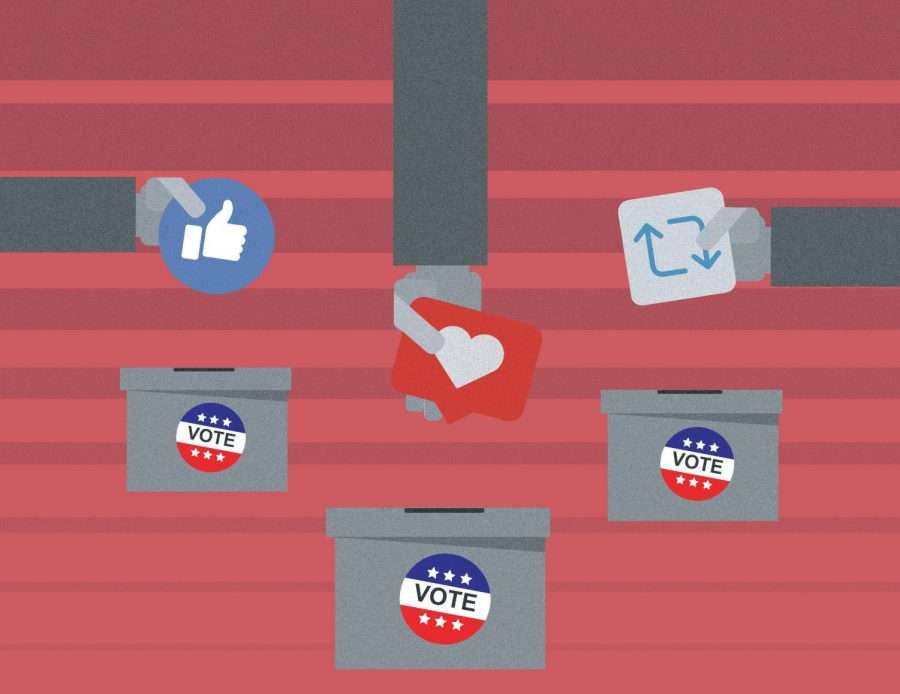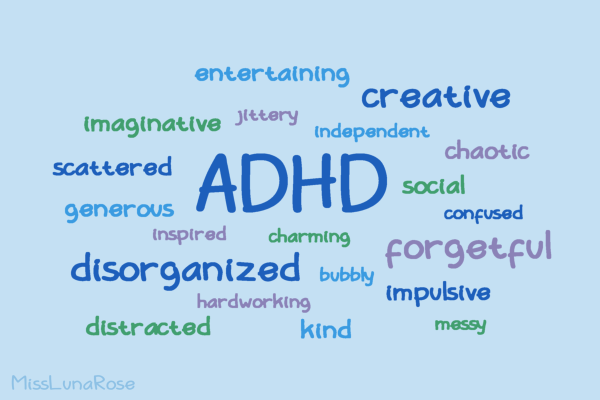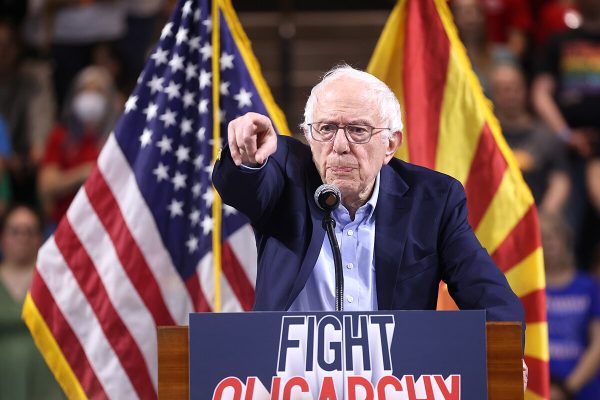Social Media News Cannot Provide Full Picture
Our world is dependent on social media. With nearly everything available at our fingertips, constantly updating and evolving, it is only natural that our way of conveying news adapted to this platform. Political leaders are active on social media, making their platforms accessible to voters, and the nation as a whole. Creators can take news and turn it into easy-to-read infographics that allow anyone to understand the issue. Newspapers have turned to using a single quote to entice a viewer to click the link in their bio to read an article. It’s the new normal, with one in five U.S. adults saying that they get their political news primarily from social media, according to the Pew Research Center. Making all of this information accessible to anyone who has access to a computer is a great benefit, but it also comes at a great cost. In the age of passively viewing and consuming information, misinformation is rampant throughout social media.
Misinformation on social media has always been present. People bending the truth while presenting information is all too common. But in a time when we know so little about our new reality and the facts are constantly evolving and changing, misinformation has hit an all-time high. Highly politicized issues being summarized down to quotes or simple bullet points has led both political parties to misconstrue and warp information to affirm their beliefs. Add in a president who uses Twitter as his outlet for news, his personal political opinions, his outward attacks on science, facts, reason and anyone who chooses to have a different opinion; now you have misuse of social media platforms at a critical point in U.S. history.
We are in the eleventh hour of what could be one of the most consequential elections of our time, and people feel that something should be done to fight this crisis of information. 75% of U.S. adults say that social media platforms have a responsibility to prevent the misuse of their platforms to influence the election, according to the Pew Research Center, but just because we believe something should be done doesn’t necessarily mean something will be done. While we want to prevent misinformation, there’s a thin line between getting rid of misleading, untrue articles and censoring people’s opinions. Social media, while becoming a form of news, is also a form of expression. How much regulation of misleading and unsubstantiated claims can companies do before it begins to hinder freedom of expression and speech?
Social media sites have tried to regulate this type of misinformation. Last week, Twitter disabled a link to a New York Post article about Hunter Biden that wasn’t factually proven, stating that if the article was true then the sources may have been obtained illegally, which would violate Twitter’s guidelines. It seemed like the right move — the article isn’t proven to be true, defames a presidential candidate’s son and potentially violates Twitter’s guidelines of usage.
However, this didn’t stop the cries of censorship that rose up in response to not being able to share the link to the controversial article. Due to public pressure from Republicans about censorship, Twitter caved and allowed the article’s link to be shared on their website, proving how hard it is to effectively remove or hinder the spread of certain information. Another approach was to label information as being potentially misleading and untrue but still allowing it to be shared on the internet, which has been used on Instagram posts and most notably on some of President Trump’s tweets. However, this has also raised concerns that the algorithm running both of these sites keeps this information from being disseminated the same way posts not labeled as factually untrue would, which could be counted as a form of censorship. It seems like that would be the point: to keep misleading information off of people’s feeds and limit its spread to those who have chosen to actively follow the account. Yet, in the highly polarized world in which we live, this has been construed as yet another form of censorship.
Maybe social media apps can’t eliminate what an individual chooses to post, but they can regulate the way their advertisement policies and data usage work during election season. Social media apps could prohibit political ads or outlaw the usage of personal data to target a user with political ads or to customize their feed to fit their political views. People can choose to actively go out and follow things pertaining to their political views, but they shouldn’t be shoved into their feed because of the usage of their private data. The people who run these social media apps also have their own personal biases in this election, and by not using their data in this politicized way, they would keep their own views out of the limelight and walk the thin line between propagating false information and censorship. Americans agree with this viewpoint, with 54% of Americans believing that social media companies shouldn’t allow political ads and 77% of Americans saying that they believe the usage of their personal data to generate political ads for their feed is unacceptable, according to the Pew Research Center.
The way humans have digested news has changed many times since the conception of news itself, and with social media it has now entered a completely new phase, for better or for worse. By bypassing the traditional news sources, news on complicated and vast topics is being fit into small spaces and overly simplified to fit the biases of the creators. This change in disseminating information is now leading to a rampant spread of disinformation. There is no clear answer for an effective way to prevent the spread of misinformation, which can be dangerous, without the heavy accusations of censorship. As we work to make our new form of news more objective and less misleading, we have to be diligent and check the sources behind our easily digestible news. As social media grapples with its new role in news and figures out its internal policies to deal with the spread of misinformation without compromising our rights, it’s important to do our own research into what we see on social media. If we know that social media can be an inaccurate source, then we must actively look into the stories we see on social media instead of scrolling passively by and accepting them as the truth. News is far more vast than what we can fit into a tweet or onto an Instagram post; we can’t expect it to tell us the full story.
Samantha Scott, FCRH ’24, is an international political economy major from Columbus, Ohio.










































































































































































































